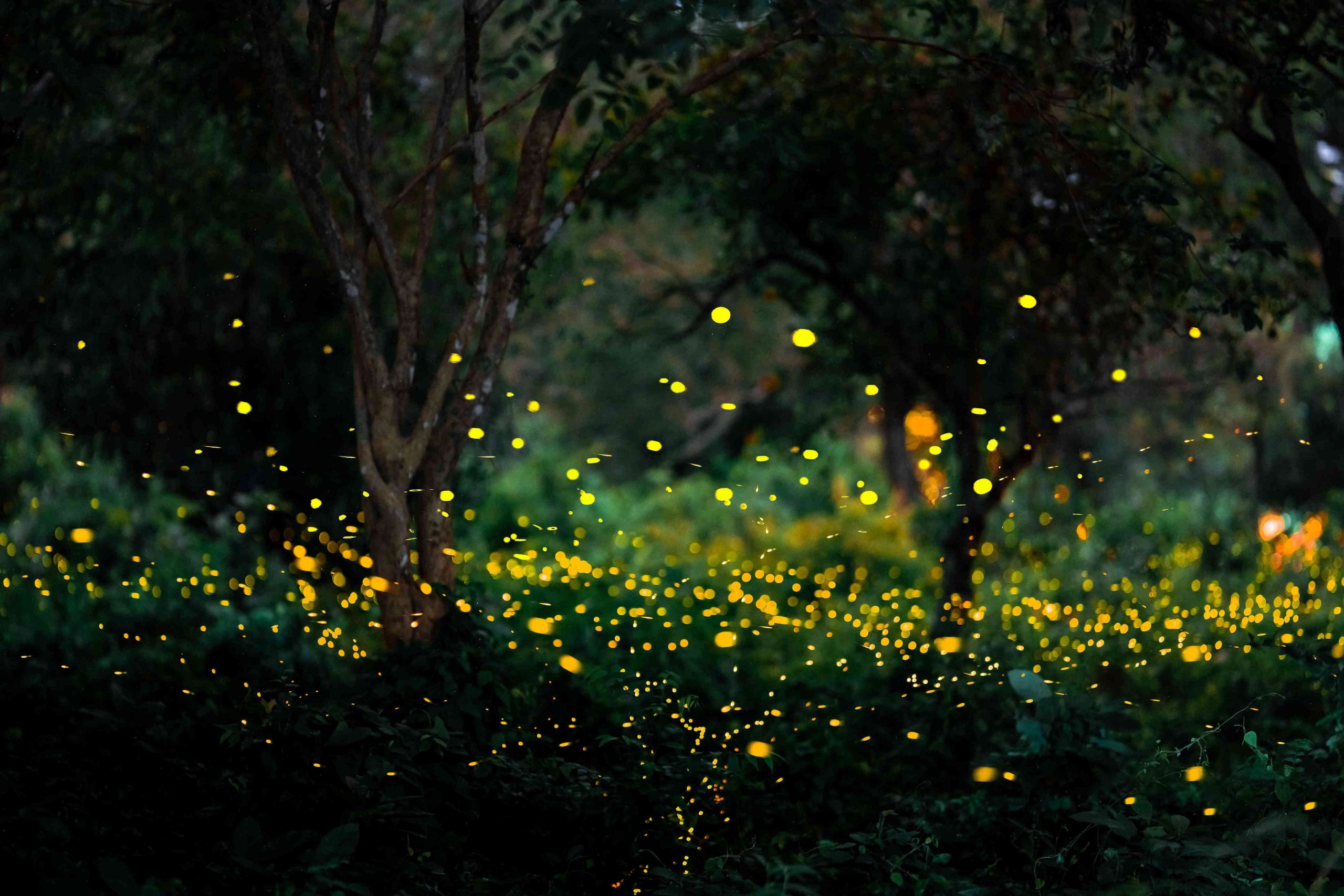There is something magical about a firefly that fascinates young and old alike. If you grew up in the South, catching
lightning bugs
in a Mason jar was a childhood summer rite of passage. With urbanization’s increased light pollution and overuse of herbicides and pesticides, firefly numbers are dwindling in backyards. With just a few changes to your landscape and gardening habits, you can create a firefly-friendly environment to bring back firefly magic.
Understanding Fireflies
There are around 2400 species of fireflies identified so far around the world on every continent except Antarctica. Fireflies (
Lampyridae)
are beetles, and if you live in North America, the most common firefly (
Photinus
) found in backyards is about half an inch long and produces a yellow-green light. The light is created by bioluminescence, a chemical reaction allowing the beetle to convert energy into light. Each species has a unique flashing pattern primarily used to communicate to other fireflies of the same species that it’s time to mate.
Assessing Your Garden
Before you begin your efforts to increase the number of fireflies in your garden, answer these questions about current garden conditions that may be keeping the insects away.
Tolong support kita ya,
Cukup klik ini aja: https://indonesiacrowd.com/support-bonus/
-
Do you keep the grass cut very short?
Fireflies like to hide in tall grass during the day and then fly into trees to signal for a mate. -
Have you used pesticides freely?
Firefly larvae feed on smaller larvae, slugs, and snails. -
Is your garden dry?
Fireflies need water and humidity. Their natural habitat is near ponds, marshes, rivers, and lakes. -
Is your garden well-lit at night?
Darkness is essential to fireflies for mating and increasing their population. Fireflies won’t make an appearance where there are bright ambient lights, including a full moon.
Creating a Firefly-Friendly Environment
If anyone asks
why my grass isn’t mowed as short
as a drill sergeant’s crew cut, I quickly tell them I’m saving the fireflies. They need a place to rest and stay cool before their nighttime adventures. While your homeowner’s association may not tolerate tall grass, find an underutilized spot in the backyard and let the grass and other vegetation grow as a spot for firefly naps. Areas with minimal disturbance are a haven for fireflies. Add a small pile of firewood to keep the soil cool and damp and provide a spot for firefly egg-laying.
Plant more native plants from your climate zone, like goldenrod, Joe Pye weed, milkweed, or switchgrass. The best firefly habitats have a diversity of vegetation of different heights and textures. A cottage garden with a bit of chaos is more welcoming to fireflies than a neatly manicured space with no leaf or plant litter in sight. Choose trees with low-hanging limbs that provide shelter for the beetles.
If you already have a natural water feature, allow vegetation to grow freely around it. Or, add an artificial water feature like a solar-powered fountain that is still at night or even shallow bowls of water to boost the firefly population.
Enhancing Your Garden with Vegetables and Herbs
Follow this logic: Slugs and snails love vegetables like beans, tomatoes, and tender lettuce. Firefly larvae feed on slugs and snails.
Planting a vegetable garden
will increase the firefly population in your backyard. A bonus, fireflies are good pollinators because they love nectar. Choose vegetables and herbs that will thrive in your climate.
Managing Light and Chemicals
Nighttime lighting can add ambiance to a garden, but it will reduce the number of fireflies attracted to your home. Consider using red or amber bulbs in outdoor fixtures or motion-activated lights if you need outdoor lighting for activities or safety.
Avoid using pesticides and herbicides as much as possible, especially broad-spectrum products. Firefly larvae need smaller insects for feeding and natural vegetation for shelter. Keeping a biome with beneficial insects will support the firefly’s life cycle.
Pest Management Without Harming Fireflies
The one downside of creating a habitat for fireflies is that the damp environment can also cause
mosquitoes
and other pests to multiply. Rather than using insecticidal sprays in the garden, use plants like marigolds,
lavender
, rosemary, and bay laurel that repel insects. Use natural pest control alternatives like
Neem oil
or insecticidal soaps that target specific problems.
Enjoying and Observing Fireflies
The best firefly viewing comes after the sun has set while sitting on a darkened,
screened back porch
. All of the wonder with none of the mosquitoes. If you don’t have a screened porch, use bug spray or a few citronella candles or torches to keep pests away. Limit any other light sources and sit quietly to take in the show.
Contributing to Firefly Conservation
One of the best ways to contribute to firefly conservation is to create a thriving firefly habitat in your garden. Patience is key as you create the right conditions for their lifecycle, and it may take up to two years to see increased populations. You can also seek out local gardening and wildlife organizations and participate in firefly counts like
Mass Audubon’s Firefly Watch.
Read the original article on
Southern Living






